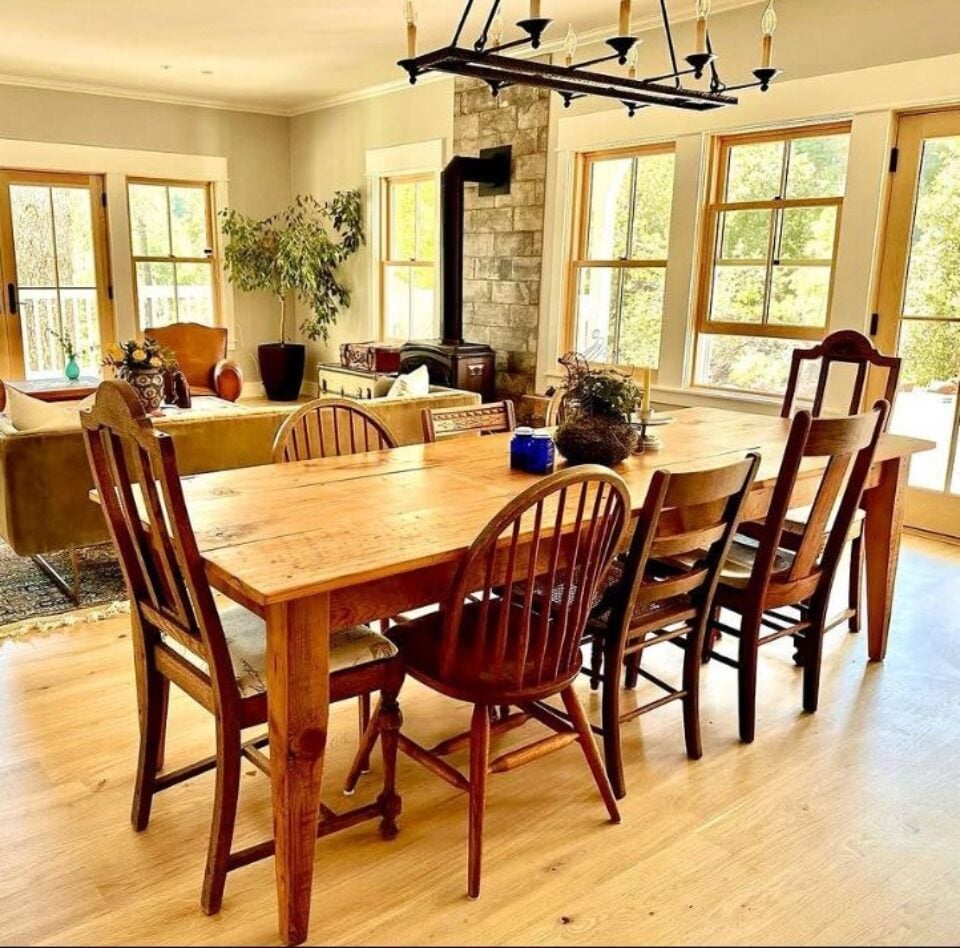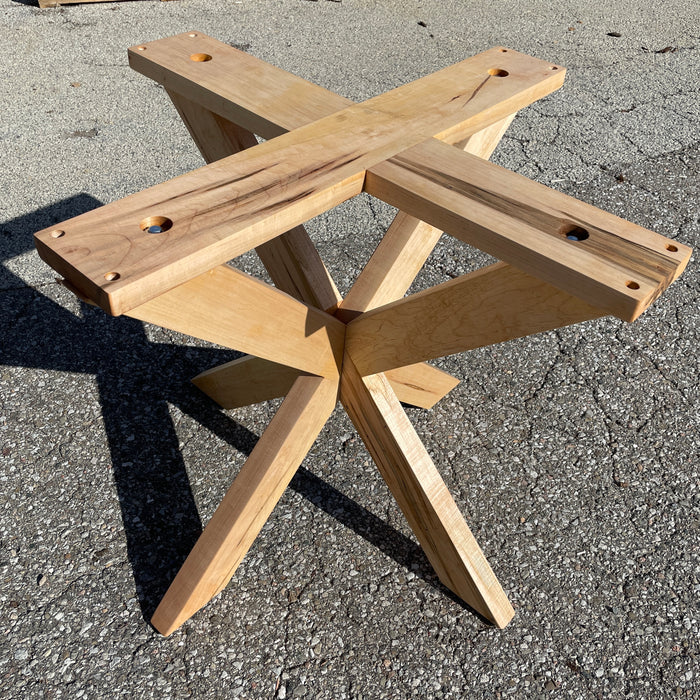What to Consider When Picking Table Legs Wood for Your Home.
When choosing wood for dining table legs, numerous important factors call for careful factor to consider to guarantee both capability and aesthetic allure. The kind of wood picked can significantly affect the table's resilience, stability, and total style, while the upkeep needs may impact long-term usability. Furthermore, the interaction of grain patterns and shade with existing furnishings can create a cohesive layout. Understanding these elements is crucial, yet many neglect the essential aspect of monetary restrictions. As we discover these factors to consider even more, the ramifications of your options might disclose unexpected challenges and chances.

Importance of Wood Kind
When picking table legs, the option of timber type plays a crucial function in identifying both aesthetics and durability. Various wood species provide differing degrees of resistance, weight, and strength to wear, which can substantially influence the capability and longevity of the table. Hardwoods such as maple, oak, and cherry are commonly favored for their durable nature and ability to withstand daily use. These woods not only offer structural stability however likewise withstand scratches and dents better than softer alternatives.
On the other hand, softer woods like poplar or ache, while extra economical, may not provide the very same level of sturdiness and may call for more frequent upkeep or replacement. The wood kind likewise influences the table's ability to sustain environmental factors such as moisture and temperature fluctuations. In addition, the option of wood can impact the simplicity of discoloring and ending up, which can be vital for accomplishing the wanted look.
Visual Factors To Consider
The visual charm of eating table legs substantially adds to the general visual of the dining area. Dining Table Legs Wood. When selecting wood for eating table legs, the grain pattern, color, and surface are critical aspects that can take away or enhance from the space's style. Various wood types display differing tones and textures; as an example, oak provides a timeless look with popular grain, while walnut uses an abundant, dark elegance
Furthermore, the form of the legs plays an essential function in specifying the table's personality. Sleek, minimalist legs can produce a contemporary feeling, while extra luxuriant, turned legs evoke standard beauty. The design of the legs need to harmonize with existing furniture and the overall theme of the space, whether it be rustic, contemporary, or transitional.
It is also vital to take into consideration how the legs interact with other furniture pieces, including chairs and sideboards. A cohesive design not only boosts the eating experience but also contributes to the home's general aesthetic coherence. Eventually, the choice of table legs ought to be a thoughtful decision that reflects personal preference while ensuring visual harmony within the room.

Longevity and Security
Durability and stability are essential consider the option of table legs, as they directly influence the durability and safety and security of the furnishings. When choosing wood for dining table legs, one need to take into consideration the inherent homes of numerous timber types. Hardwoods, such as cherry, maple, and oak, are frequently chosen for their stamina and resistance to use, making them appropriate for high-traffic eating locations.
Along with the kind of timber, the building and construction approach additionally plays a substantial duty in the total security of the table. Legs that are well created, either via typical joinery strategies or contemporary engineering methods, will certainly provide enhanced support and avoid tottering. It is important to assess the thickness and layout of the legs; thicker legs are generally a lot more secure and can endure better weight.
In addition, the environmental problems in which the table will be utilized can affect sturdiness. Wood that has been effectively dealt with for wetness resistance will execute much better in damp atmospheres. Inevitably, selecting the best combination of sturdy wood and stable construction will certainly make sure that your dining table continues to be a secure and practical centerpiece in your house for many years to come.
Upkeep Requirements
Picking table legs made from durable timber is just the start; understanding upkeep requirements is just as essential to maintain their appearance and functionality. Various timber types call for varying degrees of care, so it is necessary to understand what is needed for your certain choice.
Routine cleansing is fundamental; make use of a soft, damp fabric to remove dust and particles. Avoid rough chemicals that can damage the surface. For timber surfaces like varnish or lacquer, routine polishing with furniture wax can boost shine and give a protective layer versus scrapes.
Preventative procedures are essential too. Usage coasters and placemats to stay clear of straight contact with wet or hot products, which can warp or stain the wood. In addition, think about positioning really felt pads under the legs to avoid get redirected here scrapes on your floor covering and decrease use on the timber
Humidity control is another considerable variable; keeping a stable environment assists to stop bending and cracking. Think about making use of a humidifier or dehumidifier as essential. if your eating location is vulnerable to variations in temperature and wetness.
Budget Plan and Expense Elements
When intending to acquire table legs, understanding budget and price variables is vital to make a notified choice. The kind of wood chosen for the legs substantially influences the overall price. Woods, moved here such as oak or walnut, often tend to be extra pricey than softwoods like want, because of their toughness, visual charm, and shortage. Additionally, consider whether you are choosing or buying pre-made legs for custom layouts, as modification commonly incurs higher expenses.
Labor and craftsmanship likewise play a pivotal function in the overall cost. Handmade or artisan-crafted legs might bring a costs cost, showing the skill and time bought their creation. It's important to assess the balance in between quality and expense; spending more in advance can bring about a longer-lasting product that needs less upkeep over time.
Conclusion
In summary, picking the appropriate wood for eating table legs demands careful consideration of numerous factors, including timber kind, aesthetic charm, longevity, budget, and maintenance restraints. The choice of hardwoods such as oak and maple can enhance both strength and visual appeal, while softer woods may be much more affordable yet much less long-lasting. Inevitably, a well-informed decision relating to product choice will contribute to the general performance and durability of the dining table, guaranteeing a useful financial Web Site investment for the home.
When picking timber for dining table legs, a number of important elements require careful consideration to ensure both capability and visual allure.When choosing eating table legs, the selection of wood type plays an important role in determining both aesthetic appeals and toughness. When choosing wood for eating table legs, the grain finish, pattern, and shade are essential components that can take away or improve from the room's layout. When picking wood for dining table legs, one have to think about the fundamental residential properties of different timber types.In recap, choosing the appropriate timber for dining table legs requires careful factor to consider of different variables, consisting of wood type, visual charm, durability, budget plan, and maintenance restraints.